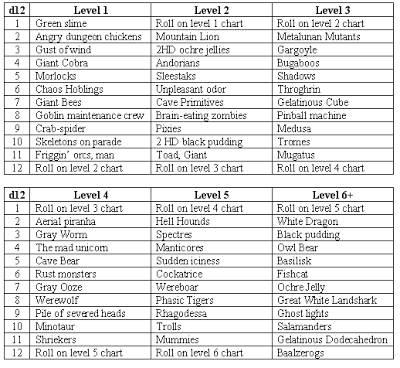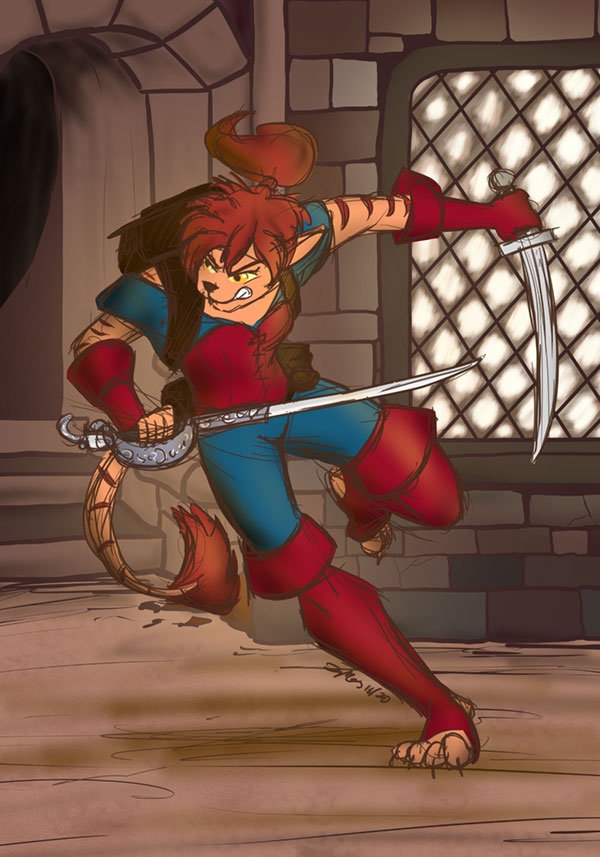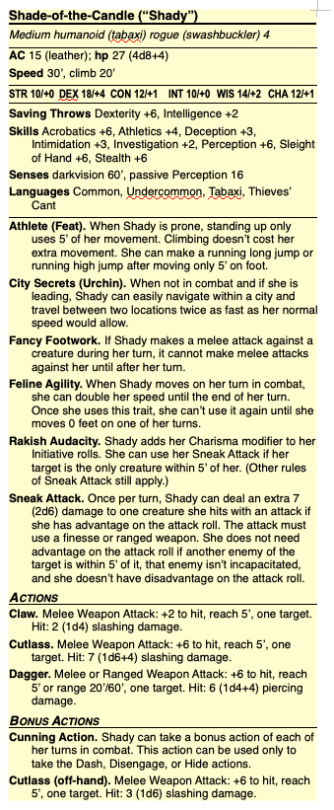 Friggin' orcs, man.Storm King's Thunder
Friggin' orcs, man.Storm King's Thunder involves a lot of overland travel. I mean, a
lot of overland travel. One reason I
created a ginormous continental map for the campaign was to keep track of all the tromping all over everywhere that the adventure calls for (and to have an everywhere to tromp over).
The question then becomes, how best to handle these long hikes in-game. There are a few possibilities:
Travel By Montage
This is the mode I practiced for many years, and it's not a bad one
per se. Essentially I just decide what happens between point A and point B and tell the players. If it's interesting enough, the journey pauses and a session or two is spent dealing with the narrative pitstop, then off they go again.
There are some downsides to this. First of all, because they're glossed over, long journeys feel cheap. Telling the players "You leave Argent, ride a boat for six weeks and now you're in Zan-Xadar, what do you want to do?" makes it seem like Argent and Zan-Xadar might as well be right next to each other. The world "feels" smaller because there is no real marker of time or distance.
(See also the
Fellowship of the Ring movie, when Gandalf leaves Bag End, travels by montage to Gondor, then travels by montage back to Bag End, all in the course of three minutes. Did that trip take a day? A year? No context.)
Second, it takes away from the organic nature of the world and puts me back in the place of being the one who decides what the characters do on their trip, both of which are against the spirit of
My Gamemastering Credo.
Overland Travel: The Mini-Game
The One Ring RPG (or its 5E variant,
Adventures in Middle-earth) has a whole subset of rules for overland travel, because let's face it, "walking" is the primary activity of any character in a book by Tolkien.
Brief summary: using the player map, the group picks a destination and a planned route and each character is assigned a task (Guide, Scout, Hunter, or Lookout). The GM then determines the overall "peril rating" of the journey based on their own map, which will then be used as a modifier for the rest of the trip. The Guide makes an "embarkation roll" which determines the general mood of the trip, which has results ranging from "The Wearisome Toil of Many Leagues" to "Paths Both Swift and True." The higher the peril rating of the journey, the more likely it is to be a rough slog.
Once all this is worked out, you turn to actual encounters along the way. There is a generic table of journey events, but the GM is encouraged to customize it for specific regions or a particular campaign. This part is a fairly standard random encounter table, but built around themes instead of specific events: "Agents of the Enemy" or "The Wonders of Middle-earth" or "A Fine Spot to Camp", etc. Combat and skill checks within the encounters are often modified by the Embarkation Result or the Peril Rating, and so forth.
Finally, assuming the party survives the encounters, they get to their destination and roll on the "Arrival Table" to see what kind of shape they're in at the end, ranging from "Weary to the Bones" to "Inspired and Filled with Hope."
Essentially, the whole journey becomes "a dungeon," with characters only able to take short rests after each encounter, with something like "A Fine Spot to Camp" providing a rare long rest opportunity. It's a neat system, somewhere between the
Hex Crawls of old-school yore and the Travel By Montage method. But it is... crunchy. A long journey with a lot of encounters will certainly take several sessions, and you'll have to keep track of the Peril Rating, Embarkation Result, and rest resources along the way. It's probably not that much more overhead than a dungeon map is, but for some reason, it
feels like a lot of work. It might just be a matter of what you're used to.
What I Have Done So Far
When the campaign transitioned from
Keep On the Borderlands to
Storm King's Thunder, that was definite Travel By Montage moment, because the whole nature of the game shifted (and I didn't have a map ready for travel then anyway). But now that the game is up and running, I have largely been treating Orbis Leonis as a giant hexcrawl.
In order to not have to rigorously define every bloody hex on the map, I make liberal use of random encounter tables, with a core assumption of one random encounter check every four hours during actual game play, and one check per day between sessions, unless the players are somewhere that is already a keyed encounter.
This doesn't mean there's going to be a fight every four hours! "Encounters" in this context aren't necessarily wandering monsters: my tables are also full of things like random terrain bits ("a wooded bog," "an ancient burial mound," "an orphaned castle wall of old"), changes in the weather, or other travelers on the road (which get re-rolled when the characters are in the wild, obviously). There are also "no encounter" slots, which is typically what goes into a slot after that encounter has happened once and becomes the norm when I keep rolling an 8 over and over again. XD
Although I was once very sneery about them, I've come to love random encounter tables because they make the world feel alive– there's
stuff going on in it and if the players ask for Survival checks to see what sort of things they might run into, I can look at the random encounter table and tell them. I sometimes go as far as to put a whole five-room dungeon on the table, but that's usually more work than it's worth because that will naturally be the roll that never comes up.
They're also great for making places feel different from each other. Argent is mostly wooded hills and has things like cleric-eating owlbears running around in it. Hestelland is a grassy plain and so it has herds of wild horses and packs of worgs. The Silver Spires Mountains are lousy with harpies, gargoyles, giant spiders, and the kobold minions of Cagarax the Red. Add to this the overlay of giants, with their frequency based on where the various giant holdings are, and you get a nicely-varied, very organic-feeling world.
I'm thinking of adding some of the elements of
The One Ring's Journeys system to my game, without going quite so crunchy– maybe adding "Journey Mood" items to the encounter table for instance, something like "This leg of the journey has been plagued with bad luck. You got mired in a bog, losing an hour, and [random character] slipped on a rock and turned their ankle. Make a Dexterity saving throw to avoid having your movement halved for the next 24 hours."
Giant Eagles, Pls
Eventually,
Storm King's Thunder has some story items built in to enable characters to travel faster. I'm not going to enumerate them here (because spoilers), but the latter parts of the campaign do require a lot of going from one end of the map to the other, possibly multiple times, and having to play all of those trips out, whether Hex Crawl or Journey Mini-Game style, would get real old after a while. Sorta like the
teleporting chain from the original
Against the Giants series back in the day, these are plot devices mostly and relatively limited in applicability, so they don't break the rest of the campaign by making long journeys trivial forever.
The main challenge with these is deciding when to introduce them, and figuring out just how limited they actually are– because once they're in place, we're back to Traveling By Montage as a plot element. And after putting so much work into building a large, well-populated world, I don't want to apply the fast-forward button just yet.
-The Gneech











